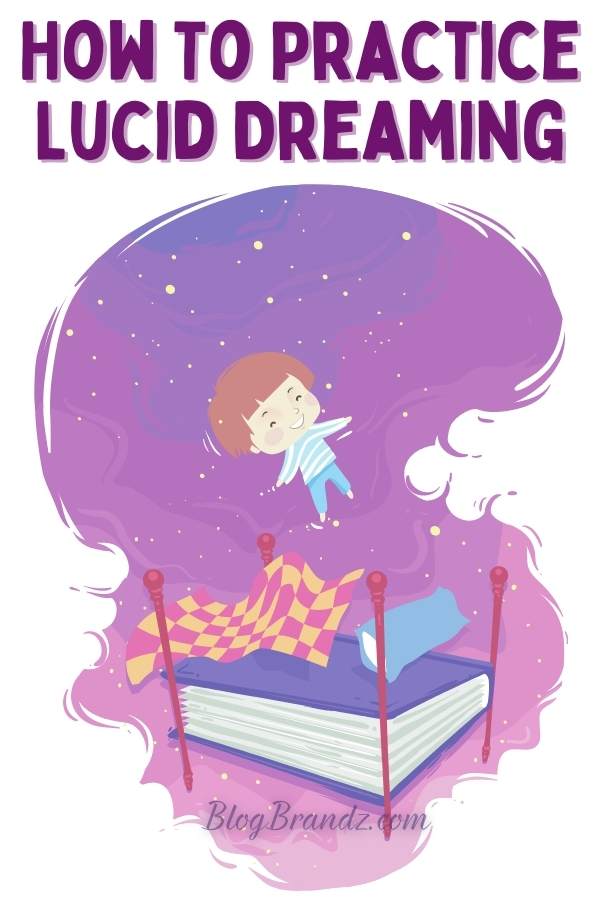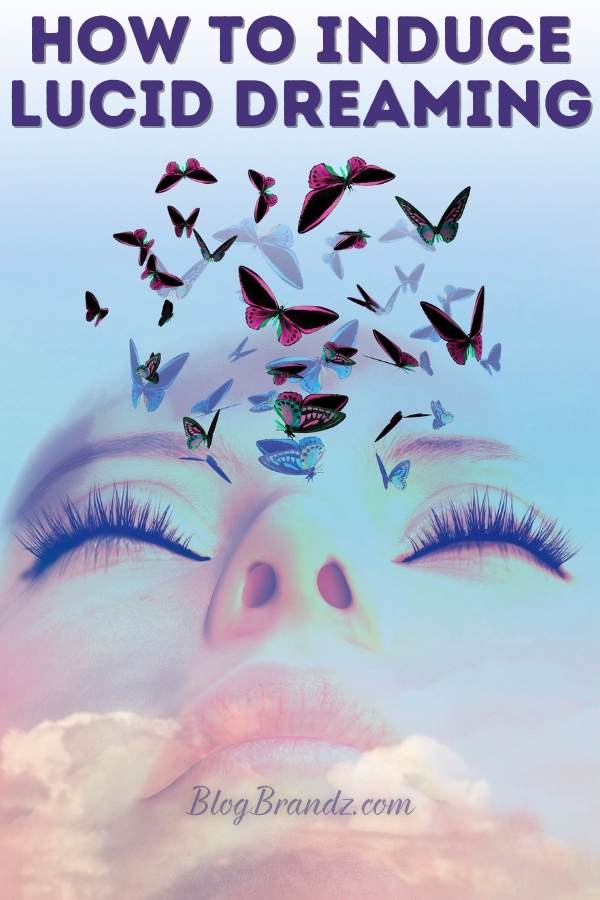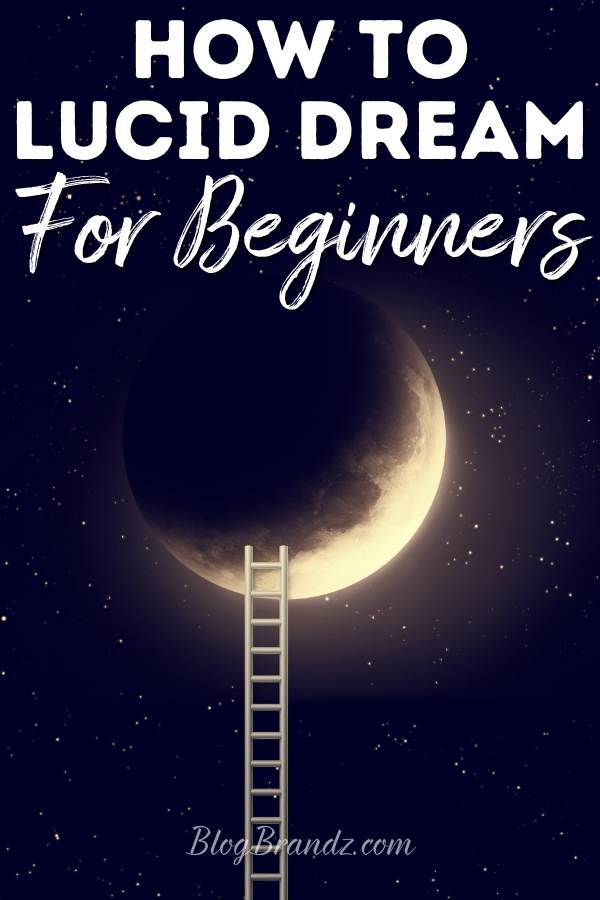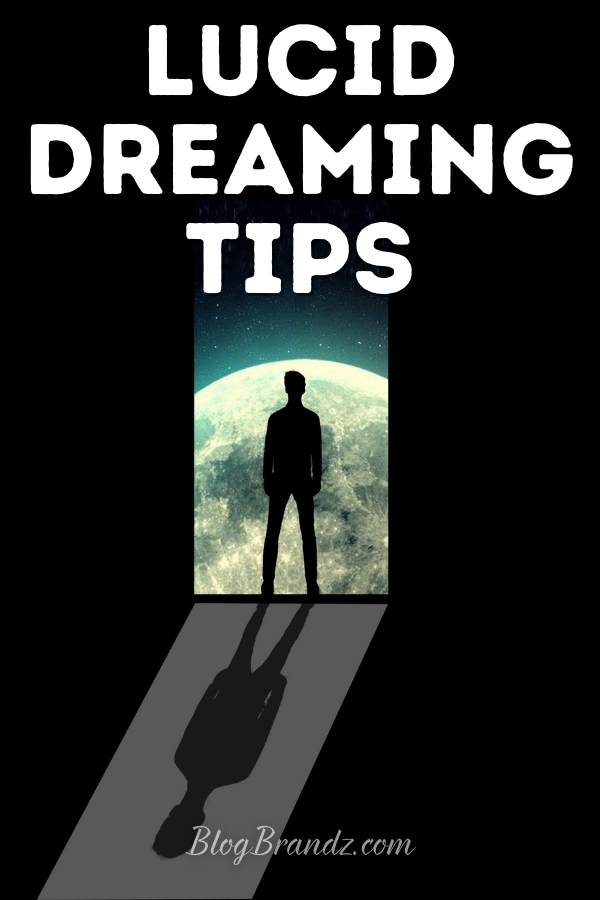
Lucid dreaming, meaning the awareness that you’re dreaming while dreaming, can be learned and become a powerful tool for personal growth and creativity.
Lucid dreaming, also called conscious dreaming or active dreaming was made popular in movies like Inception, where Leonardo DiCaprio used a lucid dream machine to induce a shared lucid dream.
But is lucid dreaming real? Yes, and humans have been exploring lucid dreaming for thousands of years. But it’s a much smaller proportion of people who realize they can creatively control how the dream is played out.
Have you ever been able to awake from a bad dream you didn’t like or realize you were not in any danger from a lucid nightmare, realizing it’s, “just a dream”? If so, you probably had a lucid dream.
While anyone is capable of lucid dreaming, many lucid dreaming techniques can help you achieve this state more easily and consistently.
Contents
The history of lucid dreaming
Since ancient times, lucid dreaming and spirituality were believed to be the experience of the divine, and all the world’s major religions have, at some point, accepted lucid dreaming as a sign of piety or ability.
After the initial discoveries made in the 19th century by Frenchman, Hervey Saint-Denys, and since 1910, when the term was coined by Frederik Van Eeden, a Dutch psychiatrist who studied dreams, the practice of realizing one is dreaming and exercising control over dreams has been known as lucid dreaming.
However, these remarkable lucid dreaming experiences have been recounted in literature as far back as the 5th-century dreams of Gennadius, as told to St. Augustine.
Though a cornerstone of early Christianity, it became somewhat suspect in the Dark Ages throughout medieval Europe. Since the 8th century, learning the ability to control dreams has been a requirement of Buddhist monks on their way to enlightenment.
Today, there are many teachers of Tibetan Dream Yoga, like Andrew Holecek, whose lucid dreaming training will help you learn a dream yoga practice called Yoga Nidra, one of the Tibetan yogas of sleep and dream.
Shamans believe that dreams are the time in which our souls speak to us and we can access a multidimensional reality. From the shamanic perspective, you can use dreams as a form of healing medicine to illuminate what is going on in your body or life.
“Our truest life is when we are in dreams awake.” ~ Henry David Thoreau
Swiss psychiatrist, Carl Jung, believed that dreams allowed us to tap into the collective unconscious, a theoretical repository of information shared by everyone.
Whether the dreams are visitations of the gods or not, the ability to interact in a meaningful way with your own subconscious mind, with your conscious faculties intact, is a powerful tool that allows you to reach into the vast resources of memory and imagination that you have access to.
When you learn to have lucid dreams and control your dreams, you can confront negativity and turn it around into hope for the future. Just as the waking mind can be trained, so can the world of dreams.
A key point to consider is that everybody dreams. You may not remember your dreams when you wake but, in an 8-hour night of sleeping, you usually have five or more dreams.
Lucid dreaming also helps you resolve personal problems because you’re able to consciously take an active role in your dreams. Controlling dreams while sleeping can also help you refine your goals into things that really do make you happy. It can also be a lot of fun!
Can you learn how to have lucid dreams?
Lucid dreaming is a challenging art to master, but you can learn lucid dreaming for beginners with lucid dreaming guides for dreaming yourself awake. Like most new skills, the more you practice lucid dreaming, the easier it will become.
Here are some steps to help you achieve your lucid dream state. As you go to sleep, use the suggestion: “As I am dreaming tonight, I will realize I am dreaming” (use your own words).
It’s important to do this as you are drifting off to sleep, but you can do it throughout the day as well. Sometimes as you are making this suggestion you may actually have a memory of a previous dream come to mind!
Your attitude should be one of positive expectation, but gently inviting rather than insisting or applying any type of pressure or anxiety. Next, work on remembering your dreams after you wake up.
By getting the mind used to remembering your dreams, you are creating a more deliberate connection of awareness between the conscious and unconscious mind.
In fact, it’s possible that you may already be having lucid dreams, but you aren’t remembering them! The final step is to attempt to stay in the twilight sleep state for as long as possible upon awakening.
You will often have a dream just before you wake in the morning so if you can stay still and keep your eyes closed, you may be able to re-enter the dream, but with more conscious awareness – thus creating a type of lucid dream as you balance between the sleeping and waking states, also called the hypnagogic state.
Lucid dream techniques to awaken within your dream
The first step is to use lucid dream hypnosis in lucid dreaming to remember your dreams. Here’s how to go about it:
- Before retiring at night take several deep breaths. Close your eyes and relax each muscle group in turn.
- Begin with your feet. Tense them and hold them for a few seconds then release the tension and relax.
- Move up your body to your head until you have relaxed your entire body. Imagine that you are descending a long flight of stairs with ten steps.
- Breathe with each step you take and repeat the word “relax”.
- Once at the bottom imagine that you are in a tranquil setting and rest there awhile.
- Now mentally tell yourself that when you awaken you will be fresh, rested, full of energy, and will remember your last dream in vivid detail.
Once you’re having and remembering dreams, the next step is to learn to realize you’re dreaming while doing so. A common problem some people encounter with lucid dreaming is that they wake up as soon as they realize they’re dreaming.
This is because the work of making conscious choices while sleeping causes the conscious mind to rise from its slumber, thus arousing the waking state.
You can induce lucid dreaming with practice, and here’s an easy way to lucid dream. Before you go to sleep, plan what you will do in your lucid dreams. This removes an element of conscious choice during your dreams, which may help you stay in the dream state.
When retiring the next night, go through your relaxation exercise and tell yourself that you will become aware that you are dreaming when you encounter your dream sign.
Carlos Castaneda, the author of The Art of Dreaming, was famously told to focus on his hands and use that single image as the trigger to alert his conscious mind that he was in a dream state. You can tell yourself that this is a sign that you should awaken from your dream.
If you remember this simple technique as one of the things to do while lucid dreaming and practice it for several weeks, you’re more likely to start having lucid dreams.
This is very effective as you always have your hands and can recognize them. With a few months of practice, many people can make their dream selves look at their hands.
When people just starting out realize they’ve looked at their own hands and that they’re dreaming, they often wake themselves up with all the excitement of having done it.
But if you’re able to stay asleep and continue on with the dream, you now have lucid awareness and will be conscious while dreaming and have complete control over it – or as complete control as you’re willing to accept.
Upon this realization, you may experience more vivid lucid dreams, often filled with much more richness than is typical. Colors are brighter, sounds are sweeter, and you can remember the smell and taste of everything in a hyper-realistic way.
It is often easier to reach states of meditation or prayer when one can exercise control over the subconscious mind. Remember to record your dream just after waking.
Don’t be discouraged if you don’t lucid dream at the start. This is a new skill that must be learned. If you persevere you will achieve results.
If you want to accelerate your results, these lucid dreaming guides will help you explore the world of lucid dreaming and lucid dream play.
How to improve your lucid dream recall
Studies have shown that many people have lucid dreams, and then forget that they had them a short time after waking. If you don’t actually remember your dreams, give yourself a command to remember your dreams when you’re drifting off to sleep every night.
The act of giving yourself a command and making that the last thing you think about every day will very soon – often within a week or two (though sometimes up to a month may pass in some individuals) – yield results.
Keeping a journal of your lucid dream experiences keeps them fresh in your mind and trains your brain to remember them. Keep a pen and small book beside your bed and upon awakening immediately ask yourself, what did I dream last night?
Take a few deep breaths and then write down your dream in as much detail as you can recall. This is an important step so don’t overlook it!
Keeping a dream journal is an exercise that not only helps you keep a record of your progress but also assists with recall so you can reliably get through the whole dream when you wake up since you’ve been training yourself to do so.
After several days of practicing these lucid dreaming techniques for beginners, look over your written dream accounts and look for recurring themes.
How to use lucid dreaming for creativity & healing
Many inventors and writers received inspiration for their inventions or stories in dreams. Lucid dreaming can spark your creative imagination and creative process.
Many writers have used their lucid dreams as a basis for new stories. As a natural lucid dreamer, I’ve found lucid dreaming to be a powerful tool for creative inspiration and receiving ideas for my short stories, like The Nursery and Ganymede, in my lucid dreams.
One of the best things to do in a lucid dream is to use lucid dream therapy to uncover the meaning of lucid dreams for transformation, healing, and getting guidance from higher levels of reality.
Some lucid dreaming techniques use guided dreaming meditations to help you re-enter an unsettling dream or recurring lucid dream so you can unveil your healing wisdom and welcome its gifts.
You can learn lucid dreaming methods for controlling your dreams that make it far easier to control negative thoughts and keep the mind focused on constructive goals that you’ve identified as important.
Lucid Dreaming Guides
Explore the world of lucid dreaming and lucid dream play with lucid dreaming guides. Learn lucid dreaming for beginners with daytime and nighttime practices to awaken within your dream.
In this Lucid Dreaming Masterclass, you’ll learn to lucid dream fully guided. This course will help you discover, grow, evolve and explore the astral realm and use lucid dreams for your development, growth, and exploration.
This course includes lucid dreaming-related subjects, such as Dream control and Interpretation, Astral Projection, Tibetan Dream yoga, and Yoga Nidra. You’ll learn how to have lucid dreams on demand, and how to create lucidity checks and use them to maintain lucidity every night.
While many would say they can’t be held accountable for what they dream, the evidence suggests that not only do we have control over our dreams but that it may be a key component in mastering our intent on what may be the most important level – the subconscious mind.
For the Law of Attraction to work optimally, you need to exercise mental control over both the conscious and subconscious mind, so becoming a lucid dreamer may be the most pleasant way of practicing the sort of mind control that is the very heart of the Law of Attraction.
Creative writing tips & tools
- 3 powerful steps to start manifesting your dream life
- 10 emotional self-care practices for writers & creatives
- The art of creative thinking: How to enhance creativity
- How to learn creative writing skills and be a better writer
- 7 tips for overcoming and dealing with writer’s block
- 7 habits of the most successful writers & famous authors
- 16 types of writing skills and how to learn them
© 2022 – 2024, Priya Florence Shah. All rights reserved.
Priya Florence Shah is a bestselling author and an award-winning blogger. Check out her book on emotional self-care for women. Priya writes short stories and poetry and chills with her two-legged and four-legged kids in her spare time.
Discover more from Business & Branding Tips
Subscribe to get the latest posts sent to your email.










